Scottish Sojourn: Lewis, the Cairngorms, and the bonnie banks of Loch Lomond
Summing up an incredible holiday: the last of Lewis before Pitlochry and the Cairngorms, ending on a drive across the Highland Boundary Fault. Le's go!…
The Outer Hebrides
The beaches in the Isle of Lewis are perhaps less celebrated than Harris, but they're still spectacular and apart from the odd surfer you’re likely to have the strand to yourself. We drove out to Uig in the west, towards Timsgarry/Ardroil and the legendary Mangurstadh. Its dramatic cliffs and sea stacks are just… awe-some. We couldn’t get down to the sand. Drove along the scenic trail instead and ended up at John Norgrove and Simant Bostock’s Spring Well. Which is essentially a life-size bronze human right arm protruding from the grassy bank at the roadside, pouring spring water from a green glass wine bottle. Just perfect for a a short trip to the end of the earth.
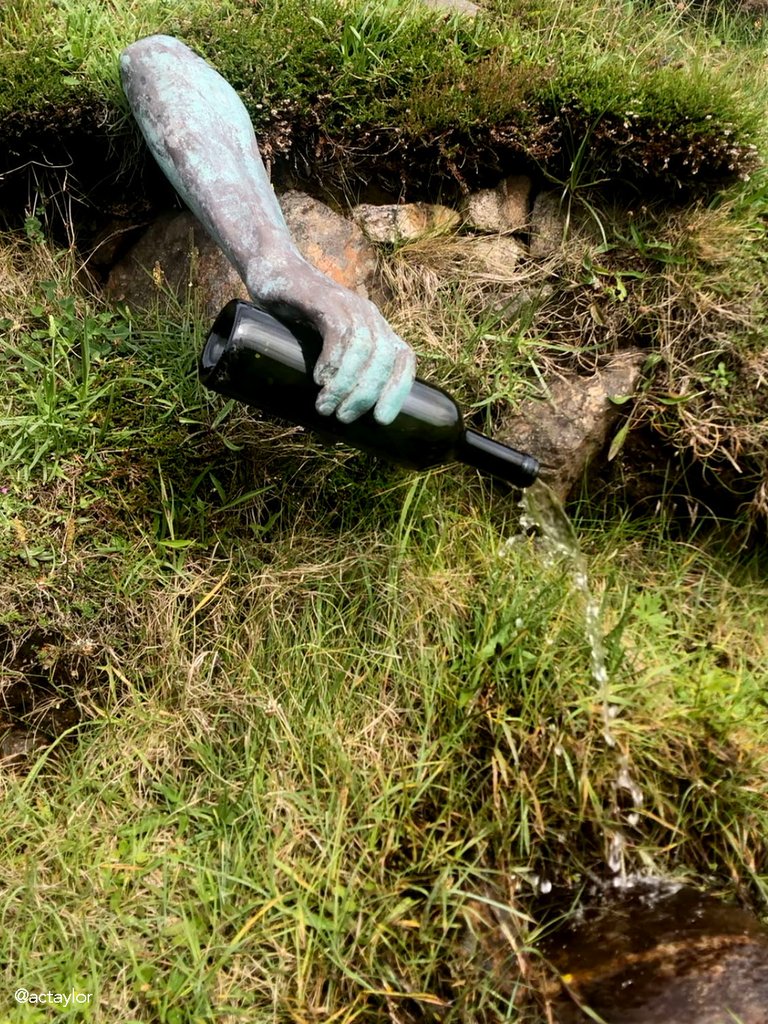
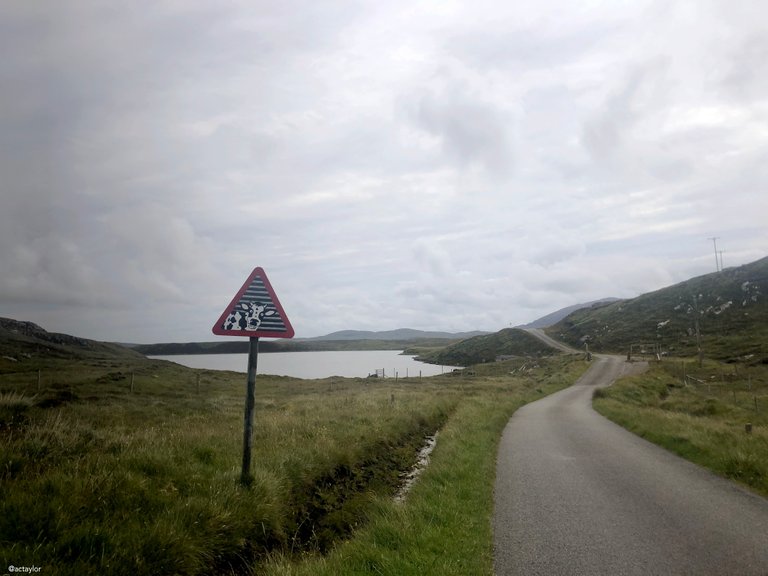
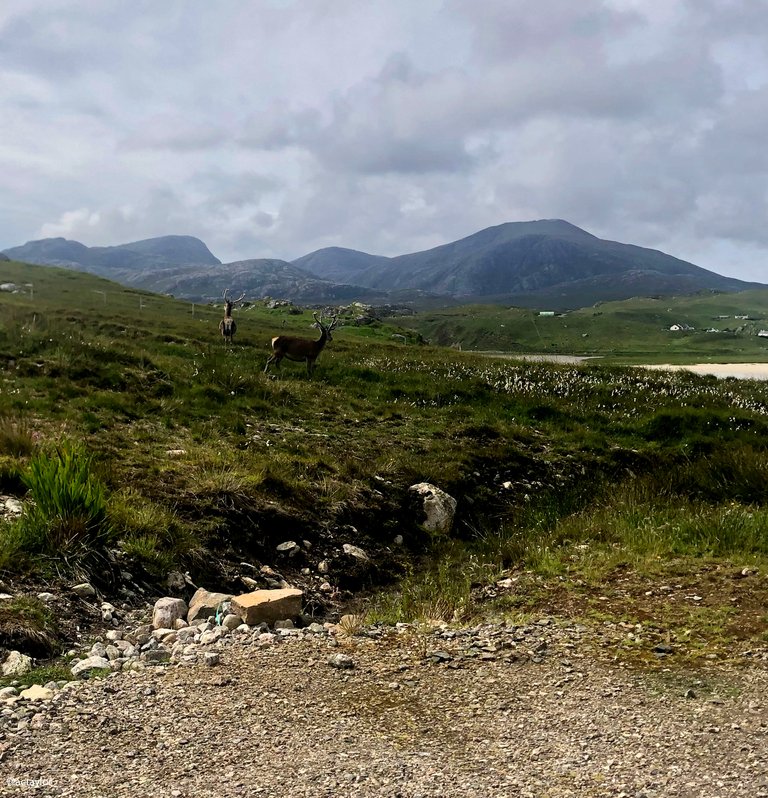
Nearby is a restaurant called Uig Sands, known for its superior seafood and a view. On the banks behind the restaurant we were greeted by two stags and a deer. With a lookout of lush hills rolling into turquoise sea, you really couldn’t get more picturesque than that! Although we didn’t stay at Uig Sands, the surrounds and isolation promise a fine retreat. I also spied a pizza place nearby called Crust - we never went but it is a worthy contender, according to according to Irving’s book.
And on Lewis you'll find the Calanais Stones: the best-preserved and most unusual combination of standing stones in a rink around a tomb, with radiating arms in cross shape. Otherwise known as the Callanish Standing Stones, they were erected 5,000 years ago - predating England’s famous Stonehenge monument - and were an important place for ritual activity for at least 2,000 years. Potentially erected for astronomical observation, they also act as passageways for would-be time-travelling heroines. Unfortunately, neither mum nor myself have the Clair Randall’s gift, despite twirling around and gently touching the stones in true – albeit unpolished – ancient Gaelic ritual.


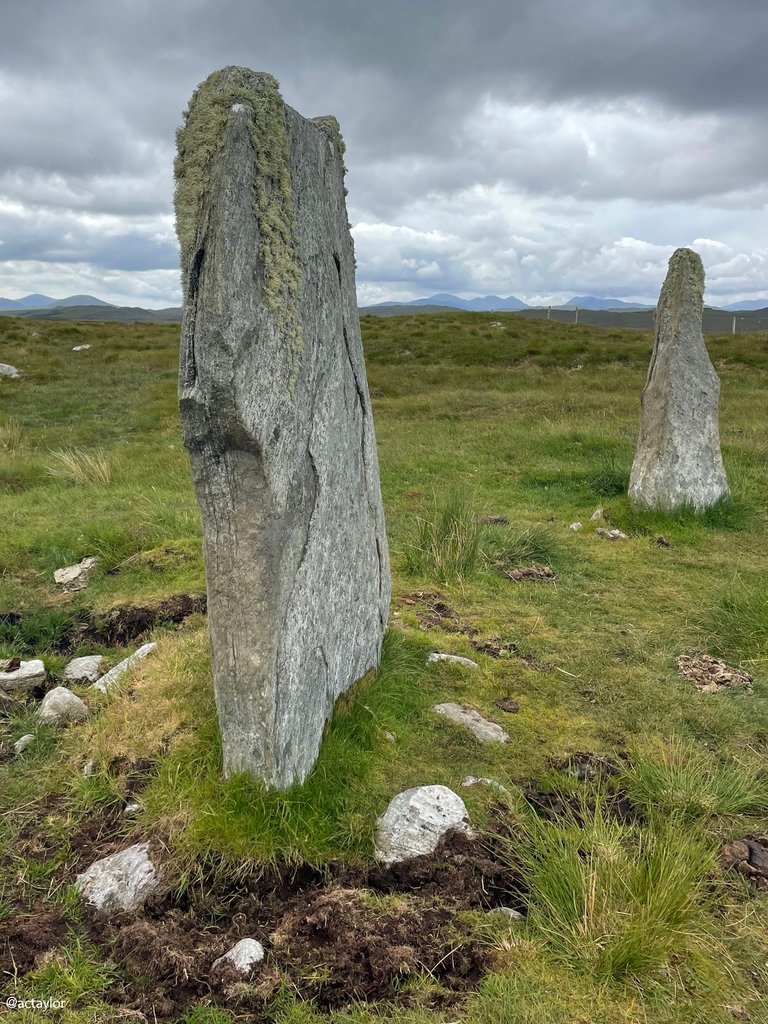
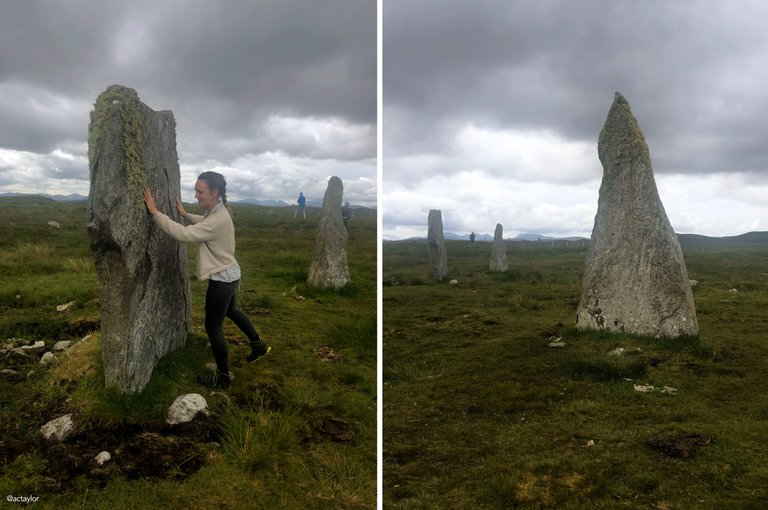
The site was unearthed from the peat in the mid-19th century and is now the Hebrides’ major historical attraction. Despite this, it was eerily quiet when we were there... We saw three other tourists, one held a pendulum and walked with long, elegant strides around the perimeter. I was more than a little curious – what were they searching for? But then, sometimes it’s best to leave people be.
Those who've visited will understand... There’s something about the stones that pushes one into a state of buzzing anticipation. Similar to that sensation of something being on the precipice of change. Wikipedia notes that there is geophysical evidence of a lightning strike at the centre of the structure dating from the time of construction! And Patrick Ashmore, who excavated at Calanais in the early 1980s, wrote of its purpose: “The most attractive explanation… is that every 18.6 years, the moon skims especially low over the southern hills. It seems to dance along them, like a great god visiting the earth. Knowledge and prediction of this heavenly event gave earthly authority to those who watched the skies.”
According to one story in Scottish folklore, the Calanais Stones were petrified giants who would not convert to Christianity. In the 17th century the people of Lewis were calling the stones fir bhrèige ("false men"). Another legend is that early on midsummer morning an entity known as the "Shining One" walks the length of the avenue, his coming heralded by the call of the cuckoo.
Following the road along the coast, past Dun Carloway Broch and Norse Mill, you will come to The Blackhouse at Arnol. The blackhouse, with its earthy floor, bedboxes and central peat fire (no chimney hole), was occupied by families and their animals until 1966. Its brilliance, I suppose, lies in the integration of human and livestock living spaces under one roof, the use of local materials like stone and thatch for insulation and durability, and its ability to withstand the harsh weather conditions of the Outer Hebrides.
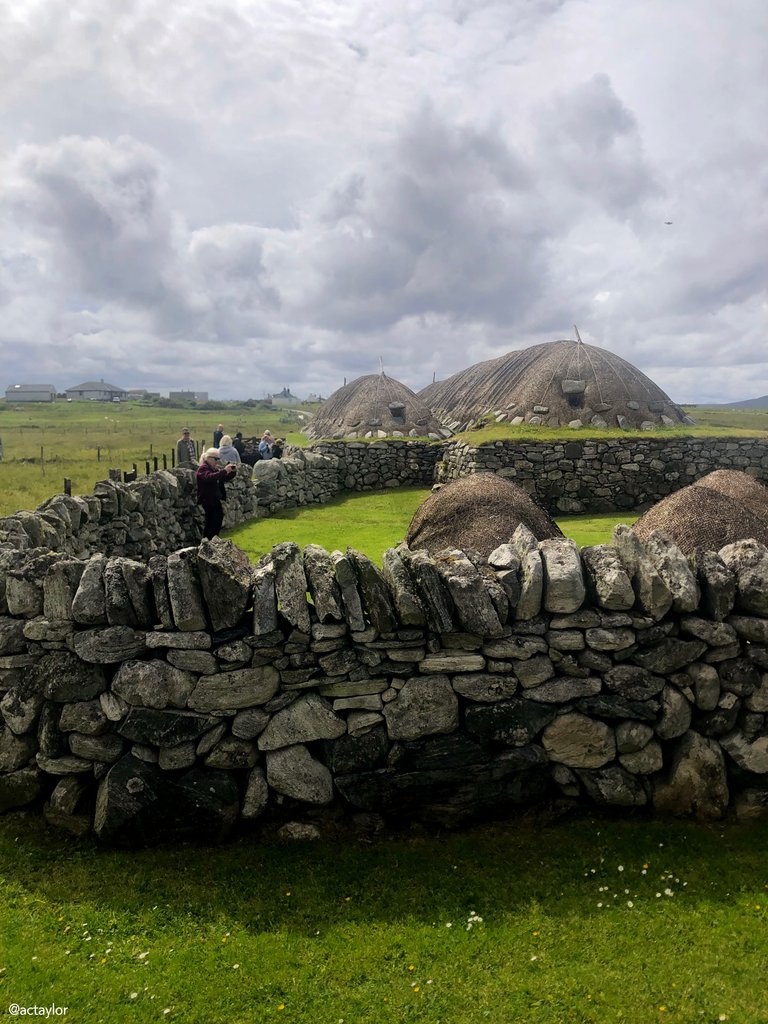

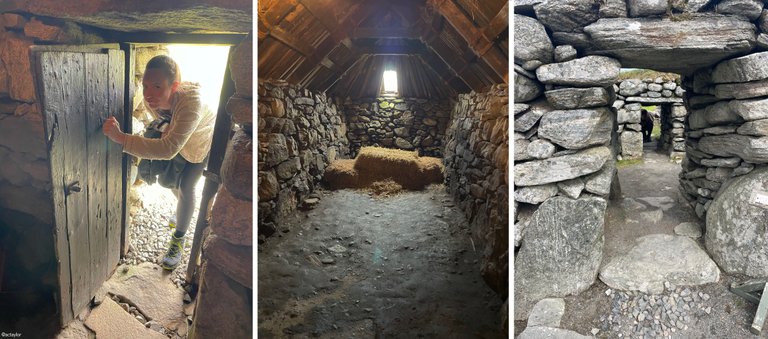

Consequently, the Blackhouse, Arnol inspires retorts from smokists who may reflect on that peaty fug... Smoke from the peat fire killed insects, and the smoke-laden thatch – which was replaced every so often – made excellent fertiliser for the fields. But now, of course, peat is restricted. The Blackhouse has a small pile to last through the year, but after that... well. I guess we’ll see what happens. Modern environmental concerns about the impacts of peat extraction, such as carbon emissions, habitat destruction, and loss of biodiversity, have led to restrictions to preserve peatlands. These measures aim to protect the environment and combat climate change while recognizing the cultural heritage of traditional practices like those seen at Arnol. Our guide, clearly without a green conscience, was pretty bitter about the lack of access – being more concerned with stepping away from tradition…
When it was time, we slowly meandered back along the coastline… paying a long, drawn out farewell to Lewis, and the Outer Hebrides more generally. The islands had been so very good to us: the weather was magic, shining a light on sites incomparable. The calmness of the Minch, "Scotland's firth” (Skotlandsfjörð) in old Norse, made the journey back all the more powerful. I can’t speak for mum, but the return for me was clandestine. With all that had come to pass before and during our journey, I felt so very changed. There’s a word I’ve come to settle on – that best captures that feeling… a hug of a word. “Coorie”: the Scottish art of deriving comfort, wellbeing and energy from wild landscapes.” It's a word that encourages us to appreciate the simple pleasures in life, embracing the great outdoors (no matter what the weather) and enjoying the cosy feeling of coming back to home comforts afterwards. A journey through the islands can make you feel this way. With a pang in our hearts, we waved the isles away – watched them recede into fog. Caught the MV Loch Seaforth Ferry from Stornoway to Ullapool, departing at 14:00 and arriving at 16:40. We made it just in time for the check-in, which closed at 13:15.
Cairngorms
The long, windy drive from Ullapool to Aviemore was rough, dogged as we were with the tireless adventuring. Our night at the High Range wasn’t shabby, but eating out was a mission and a half. **Word to the wise – if you’re travelling through the Cairngorms and are planning on to eat out… book in advance! By this point in the trip, we’d run out of cheese, bread, and – most critically – wine. Starving, irritable but placated with two seats, we settled for a hardy little pub on the corner and ordered beery soups.
It was lovely to wake up in the middle of the Cairngorms. After a heated search for coffee we were on our way. The villages and towns in the Park have networks of community paths and trails. From Coffin Roads and Drove Roads to Smugglers’ Paths and Medieval Roads, there are many histories to explore. Do check out the following link if you’d like to feel stuck for choice. We settled on loop of Uath Lochans – once carved by a river of ice known as the Strathspey Glacier.

There are four Lochans altogether, offering a view east from Creag Far-leitire in Glen Feshie’s Inshriach Forest towards the foothills of the Cairngorms, the highest of which should be Ben Macdhui but I’m not sure if its actually on the skyline. A magical mix of woodland and sparking lochans. This was a generally firm gravel path, often narrow, with sections of boardwalk. A sign at the entrance to the parkway read…
“You might think Scotland is a bit cold, but it used to be a lot colder. If you had been here 20,000 years ago, you would have been squashed flat under a kilometre of ice. The Strathspey Glacier was one of the largest in Scotland. It was also one of the fastest, moving at 30 metres a year (that’s pretty fast for a glacier). The lochans were formed when the blocks of ice that were left here by the glacier had melted. The holes they left are known as kettle holes. The dark peaty waters of these lochans are rich in wildlife.”
Highland Perthshire
A spontaneous stop in at Blair Atholl Castle was an unexpected delight, and now comes highly recommended. Nestled in the charming town of Pitlochry, Perthshire, Scotland, Blair Atholl been making an impression since the 13th century. Originally constructed by the Atholl family, the castle has seen more renovations than a reality TV house… There’s actually a section in the house that flaunts an exposed wall – where you can see the corner of the original stonework taking from 1269 forming Cromyn’s Tower to brcickwork (dated c.1820), and timber laths – horizonal timber battens fixed back into the stone wall ready to received a plaster coat finish (dated c. 1760). But its historical significance includes a starring role during the Jacobite risings, adding a bit of drama to its already storied past. The bottom floor was possibly my favourite part of the building – but we’ll get onto why in a second…

Architecturally, the castle is a showcase of 19th-century grandeur with its castellated turrets. While the rebuild may be relatively modern, the interior still boasts historic furnishings, tapestries, and artwork, giving visitors a peek into the opulent lifestyle of its former residents. It is set amid beautifully landscaped gardens, with a wee bagpiper belting forlorn tunes into the afternoon mist. Nowadays, the castle remains in the hands of the Atholl family and is open to the public. And it is absolutely brimming with the strangest assortment of knickknacks. From ivory inlaid cabinets to gilt leather walls; evidence of illicit distilling to relics of the Napoleonic War. Numbered rooms are chock-full of ‘collections’. Costumes, toys, plates, weapons, stag skulls, walking sticks – so many things. Upstairs the more usual stuffed apartments.
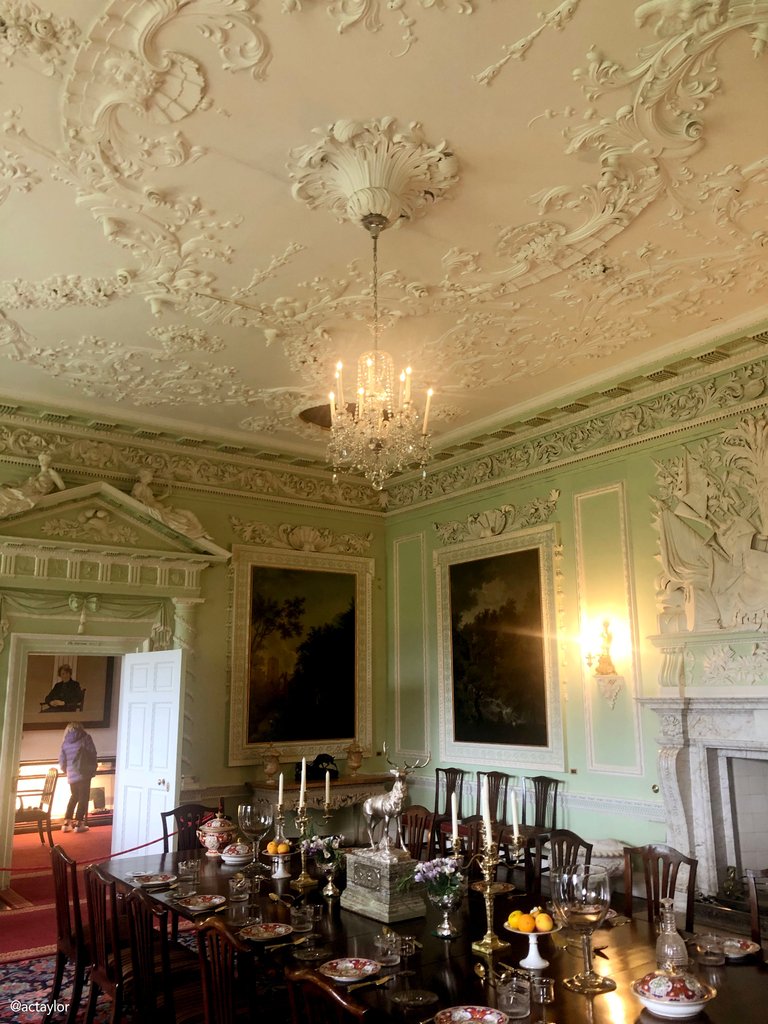
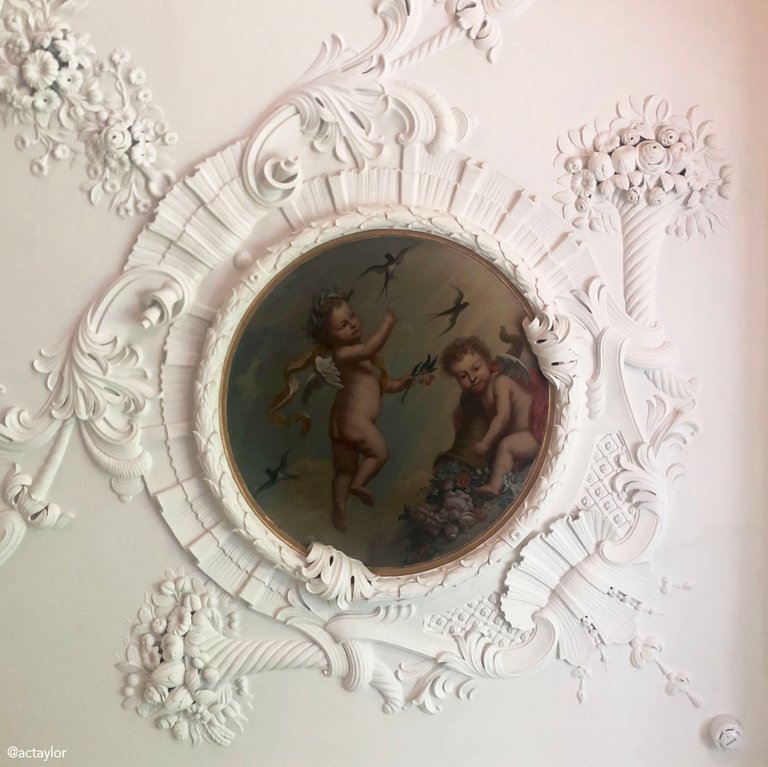
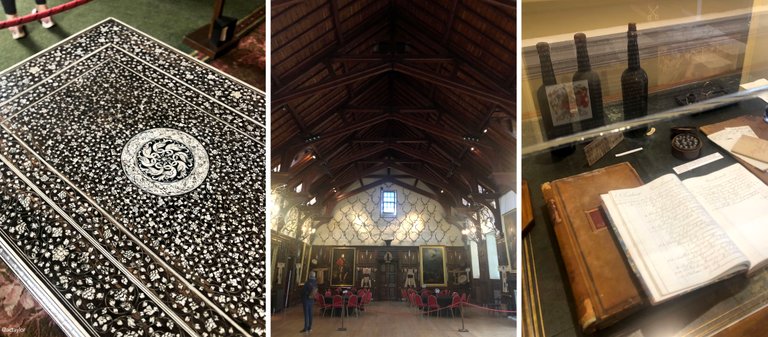

And, my favourite: the Jacobite bit on the ground floor. Taking up the Tullibardine Room, the shelves are full of gems. Because it captures the complicated history of Blair Atholl so well, I thought I’d copy in what a laminated page in the room said:
“At the time of the Jacobite risings of 1715 and 1745 the sons of the 1st Duke of Atholl were divided. The eldest William had participated in 1715, then remained in exile until landing with Prince Charles Edward Stuart in 1745. The 2nd son James supported the government and became Duke. The two younger sons George and Charles were Jacobites, George being their most effective and charismatic commander.
"Prince Charles Edward Stuart, the Jacobite leader, stayed at Blair on his way to Edinburgh in 1745. After he left, the castle was garrisoned by government troops Lord George then besieged his own family home in an attempted to remove them, before being called away to defeat at the Battle of Culloden.
"Inhabitants of the estate were also divided, some keen to join the Jacobites, other preferring to stay at home and await results. As the 1st and 2nd Dukes were government supporters the estates were little damaged and remained in the family.
"In 1745 the Jacobites had some early success in Scotland but received little support on their march through England and turned back at Derby. They were pursued by government troops until the final defeat at Culloden in April 1746.”
Blair Atholl is a perfect example, at least to me, of exposing how divided the country was around the Jacobite uprising. The Atholl family's partial support of the Jacobites, combined with the internal divisions and the external threat, made this period particularly challenging. It was a spontaneous visit, but well worth it in the end.
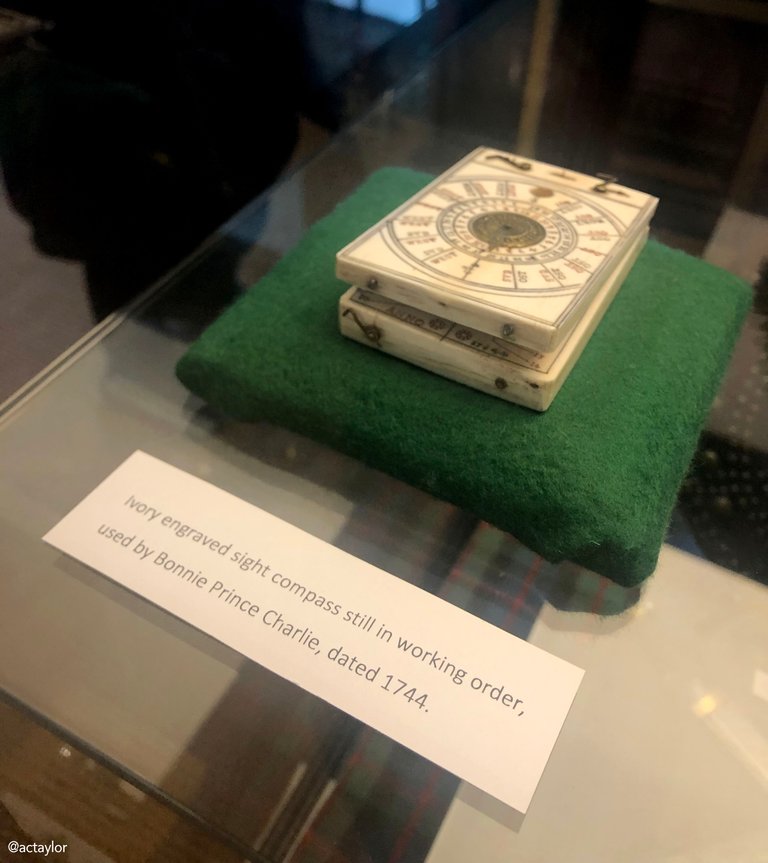
Loch Lomond and The Trossachs National Park
We wanted to end our travels on the shores of Loch Lomond. But before we got there we visited a very, very special pub called The Drovers Inn - which I’m mentioning here simply because it is absolutely worth seeking out if you’re in these parts. It's a bonkers place. Rumoured to be one of the most haunted hotels in Britain, this historic building has welcomed hundreds of thousands of people, including the likes of Rob Roy and Gerard Butler to name just a few. Very atmospheric, very quirky, packed with stuffed creatures of all sorts and several dodgy looking paintings. You really get the sense of having stepped back in time – appealing to any eager traveller with a glint in their eye for mischief and storytelling.
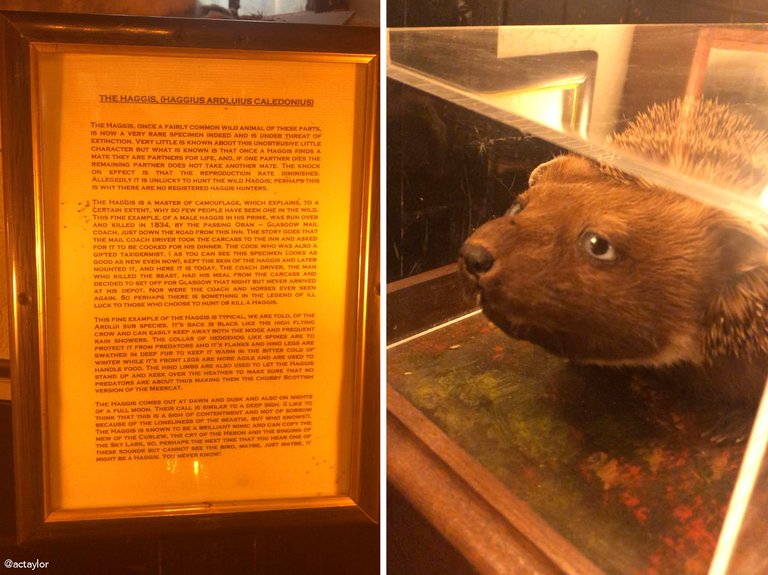
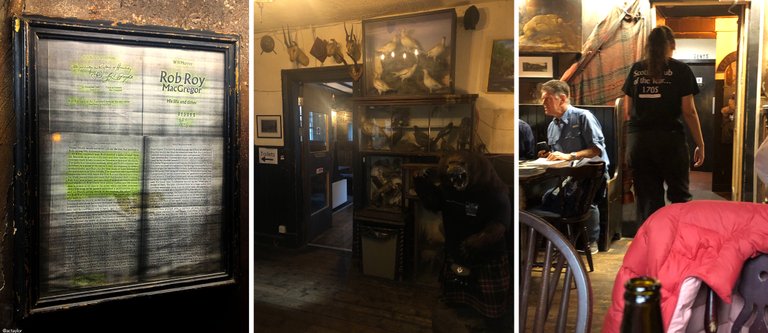
And finally, cresting the hill, we were in full view of it… Loch Lomond. The Loch with tales to tell. Loch Lomond, often referred to as the “Queen of Scottish Lochs,” is a shimmering gem nestled in the heart of the Scottish Highlands. Its expansive waters stretch gracefully, embracing the surrounding hills and glens, creating a breathtaking tableau of nature's artistry. Throughout history the area was the setting for numerous clan conflicts and rivalries. And during the Jacobite risings of the 18th century, Loch Lomond played a role in the political turmoil of the time. According to Wikipedia the loch's islands and shores were strategic locations for both Jacobite and government forces.
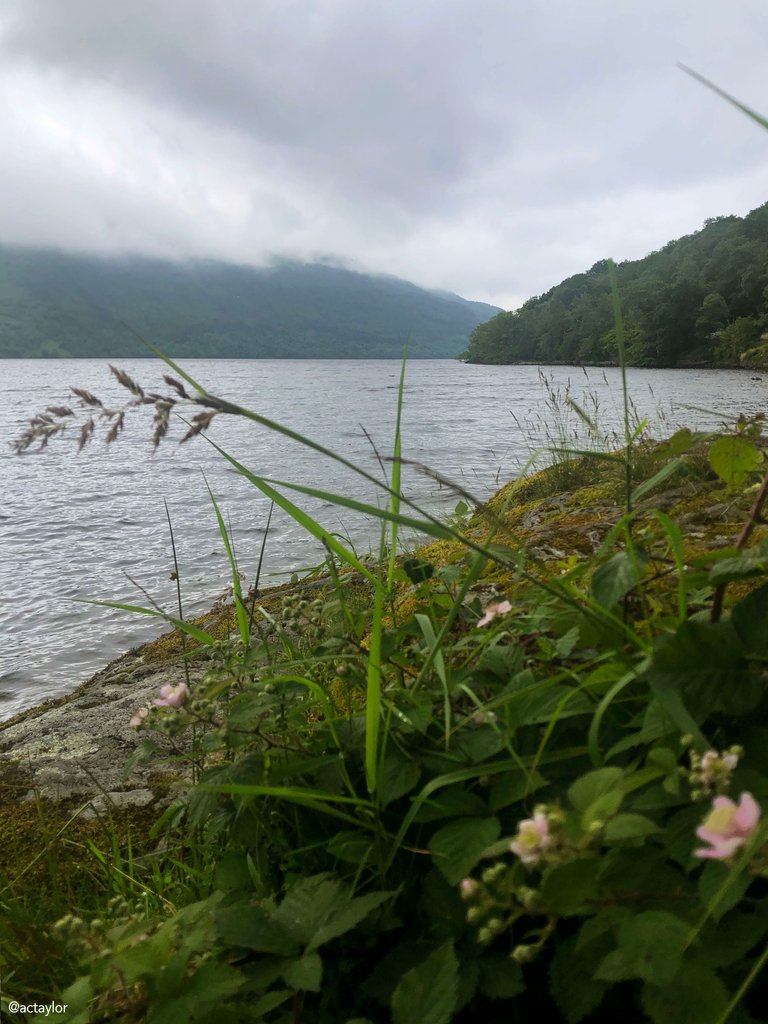
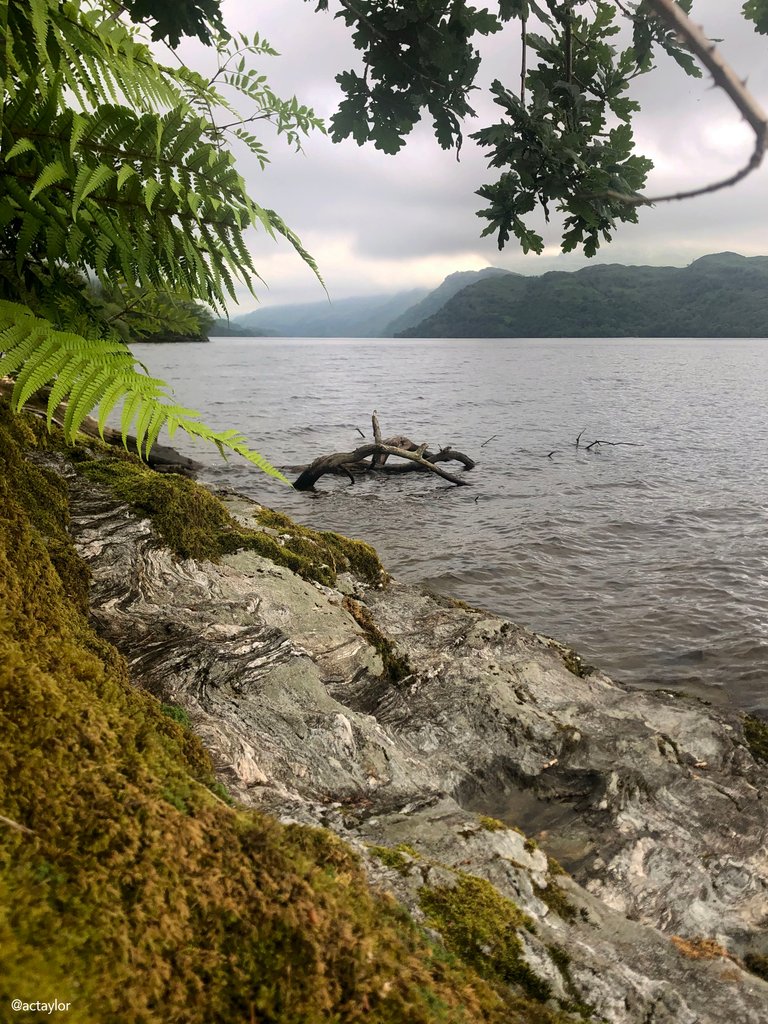
We played the famous folk song "The Bonnie Banks o' Loch Lomond” as we travelled the loch’s breadth. The song is linked to this period, capturing the sorrow and sentiment of the Scottish soldiers who fought in the Jacobite cause. It makes me cry every time I listen to it – without fault. I often wonder why these tunes affect me so. Perhaps its the sombre verses, the powerful pipes, the military beat of the drums... Do you feel the same way? There’s some unshakable gut-wrenching plane to this music that speaks my core, making me so very proud and so very sorry.
Ella Roberts sings a beautiful version of the song. I’ll copy in a link to the recording below.
Oh my word, it’s ridiculous – I’m playing this in the background as I write and we’re barely though the second verse but my eyes are glistening and my chest is tightening up. Please tell me I’m not the only one so affected? The lyrics are melancholy, but so full of yearning, passion - a love that knows no bounds. Where even in death one’s expression, one’s feelings for home are unconquerable.
By yon bonnie banks and by yon bonnie braes
Where the sun shines bright on Loch Lomon'
Where me and my true love will never meet again
On the bonnie, bonnie banks o' Loch Lomon'
O ye'll take the high road and I'll take the low
And I'll be in Scotland afore ye
For me and my true love will never meet again
On the bonnie, bonnie banks o' Loch Lomon'
'Twas there that we parted in yon shady glen
On the steep, steep side o' Ben Lomon'
Where in the purple hue the Hieland hills we view
An' the moon comin' out in the gloamin'
O ye'll take the high road and I'll take the low
And I'll be in Scotland afore ye
For me and my true love will never meet again
On the bonnie, bonnie banks o' Loch Lomon'
The wee birdies sing and the wild flowers spring
And in sunshine the waters are sleepin'
But the broken heart it kens nae second spring again
Tho' the waefu' may cease frae their greetin'
O ye'll take the high road and I'll take the low
And I'll be in Scotland afore ye
For me and my true love will never meet again
On the bonnie, bonnie banks o' Loch Lomon'
On that wonderful note, I can proudly claim to have finished my summary of our Scottish sojourn.
The other posts, should you wish to read them and get some inspiration for your travels, are linked below.
1 > Scottish Sojourn: Abbotsford and various highlights in the Kingdom of Fife
2 > Scottish Sojourn: Perthshire, Argyll and the Isle of Mull
3 > Scottish Sojourn: Uist, Eriskay, and Harris in the Outer Hebrides
It goes without saying that Scotland will forever have a piece of me – the culmination of an unforgettable trip through some of the most remote, far-reaching destinations during such a transitional period, with my mum by my side…
Scotland is an enriching country full of mystique, heart; shrouded in a heritage that stretches as far back in time as one can go. Although I’m excited for the next step, I’m also sad to leave this place.
But I’ll be back.
You can take the girl out of Scotland, but you can’t take Scotland out of the girl.
Disclaimer
Blogger: @actaylor
Photographs: unless otherwise noted, all images were taken by me or mum with an iPhone 8 and an iPhone 14
Congratulations, your post has been added to WorldMapPin! 🎉
Did you know you have your own profile map?
And every post has their own map too!
Want to have your post on the map too?
a beautiful place.
So true!! Thanks 💙 @mnurhiver
Hiya, @ybanezkim26 here, just swinging by to let you know that this post made it into our Top 3 in Travel Digest #2264.
Your post has been manually curated by the @worldmappin team. If you like what we're doing, please drop by to check out all the rest of today's great posts and consider supporting other authors like yourself and us so we can keep the project going!
Become part of our travel community:
Thank you @ybanezkim26 💫🌞 I'll check the post out. And thanks for the manual curation @worldmappin 💛